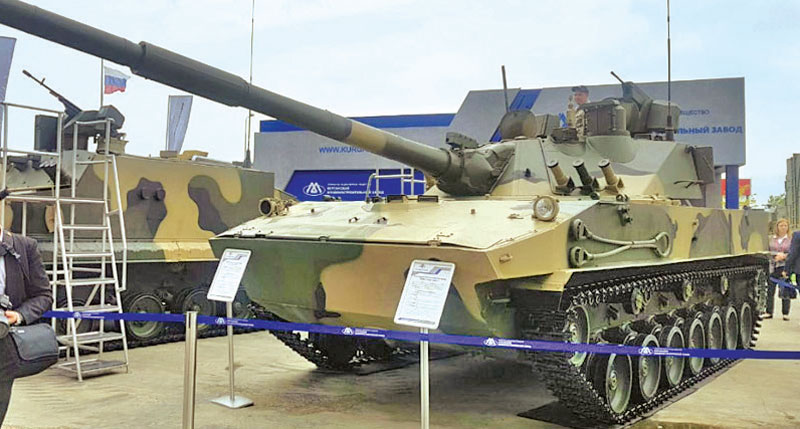The government should consider producing its own light tanks to meet the critical demand
 Ajay Singh
Ajay Singh
India has had very good experiences with light tanks. They were part of some of our greatest victories. In October 1948, light Stuart tanks were taken all the way up to Zoji la at an altitude of 11,400ft and helped capture the supposedly impregnable pass. In 1962, the airlifting of six AMX 13 light tanks into Chushul helped bolster the defences of the sector and prevented the fall of that vital airfield. And in 1971, the light, amphibious PT-76s overcame swampy, riverine terrain and were in the forefront of the dash towards Dhaka.
Unfortunately, after the last PT-76 rode off into the sunset, no light tank has appeared on the scene. The case for a light tank was repeatedly felt for the Eastern and the Northern frontiers but given the glacial pace of decision-making, the procurement process remained stalled for over three decades. It is only now that the armour threat in Ladakh has increased the frantic search for a light tank.
The search for a light tank to replace the venerable PT-76 started in the late Eighties when different options—including the IKV-91 of Sweden—were evaluated, only to be discarded due to cost constraints. The Defence Research and Development Organisation (DRDO) did develop a prototype based on the chassis of a BMP-II with a 105mm tank gun fitted on a French GIAT TS-90 turret. Coupled with computerised fire control systems and an uprated engine, it performed well in firing and mobility trials, and would have provided a viable solution, had the project not been shelved in the mid-Nineties.
The interest in light tanks resurfaced in 2009 when two light armoured brigades were sanctioned for the high-altitude areas of Ladakh and Arunachal Pradesh. While some of the light tanks in service across the world were considered, it was eventually decided to go in with existing equipment and continue with the medium T-72s. The brigades were eventually based on BMP-IIs and T-72s, which though formidable, are not designed for operations in mountainous terrain. At 48 tons and a large body, manoeuvrability of T-72s in those heights is restricted. The oxygen-depleted atmosphere also affects engine efficiency which further impinges easy movement. Complementing the T-72s are the excellent infantry combat vehicles, the BMP-IIs, which with a weight of 14 tons and greatly enhanced mobility can perform more effectively in the difficult terrain.
While the T-72s and the BMP II have performed excellently in deserts and plains, they are not designed for high altitude and mountainous country. Opposing them are the Chinese Type-15s or the ZTQ-15 light tanks which had been designed by China’s NORINCO (China North Industries Corporation) specifically for deployment in highlands and riverine terrain. At 33 tons (36 tons when fitted with additional armour), it is not classically a light tank, but its power-pack provides a hefty power to weight ratio, which enables it to move nimbly across mountainous terrain. Its 105mm rifled gun with enhanced ammunition is capable of penetrating most tanks and the high angle of elevation and depression of its specially designed turret enables easy engagement of targets on mountain tops and low valleys.
As the Chinese stand-off continues with even more ominous undertones, the Modi government has given the go-ahead for emergency procurement of light tanks. While it is tempting to go in for immediate purchase (at exorbitant costs) to meet the immediate requirement, we should avoid knee-jerk reactions. Rather we should take the long-term perspective and develop the optimal instrument which suits our requirement best and enable us to develop a family of light armoured vehicles indigenously.
Developing a Light Tank
The Request for Information (RFI) for a light tank was floated in 2009 for a requirement of 300 light tanks. It proposed a mix of 200 wheeled and 100 tracked vehicles for operations in high altitude, urban and semi-urban terrain, the riverine area in the Eastern borders and also in the Rann of Kutch and for United Nations’ operations. The major criteria were that the tank had to be below 22 tons, have a high ground clearance and low silhouette and be able to destroy enemy tanks and other targets at ranges of over 2,000 metres with a mix of High Explosive/ Armour Piercing ammunition and long-range missiles.
As the urgency increases, the old General Staff Qualitative Requirements (GSQRs) and files are being dusted and studied afresh, and different solutions evaluated. Amongst the options being considered are Russia’s 2S25, commonly known as SPRUT–SD, an anti-tank armoured vehicle built around a BMP-II chassis. This light, amphibious tank mounts the formidable 125mm smooth bore gun used by T-72s and T-90s, ensuring commonality of ammunition. With an upgraded 510 BHP engine and a weight of around 20 tons, it provides good mobility in all conditions. Yet, it is a tank-destroyer based on old technology; Russia has only 24 of them. Their assembly lines will have to be revamped and no matter what promises have been made, eventual delivery would take a year and a half on a minimum. No other nation has ordered them and there will be long-term problems in the procurement of spares, overhauls and upgrades. Going in for SPRUT will be, at best, an ad hoc solution. Italy’s Centauro wheeled tank destroyer is also a candidate for the wheeled version, but it too poses the same issues and problems.

You must be logged in to view this content.

